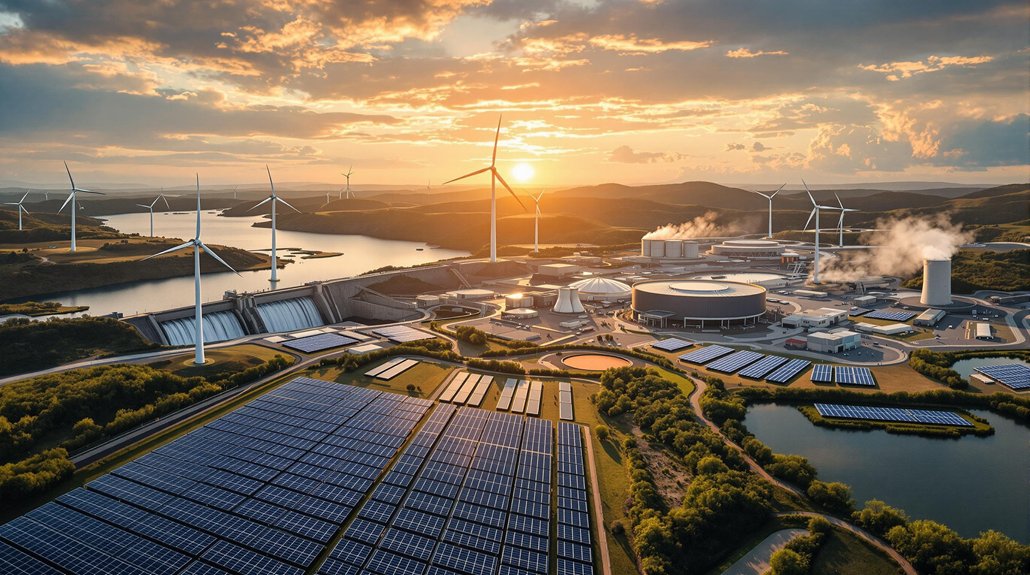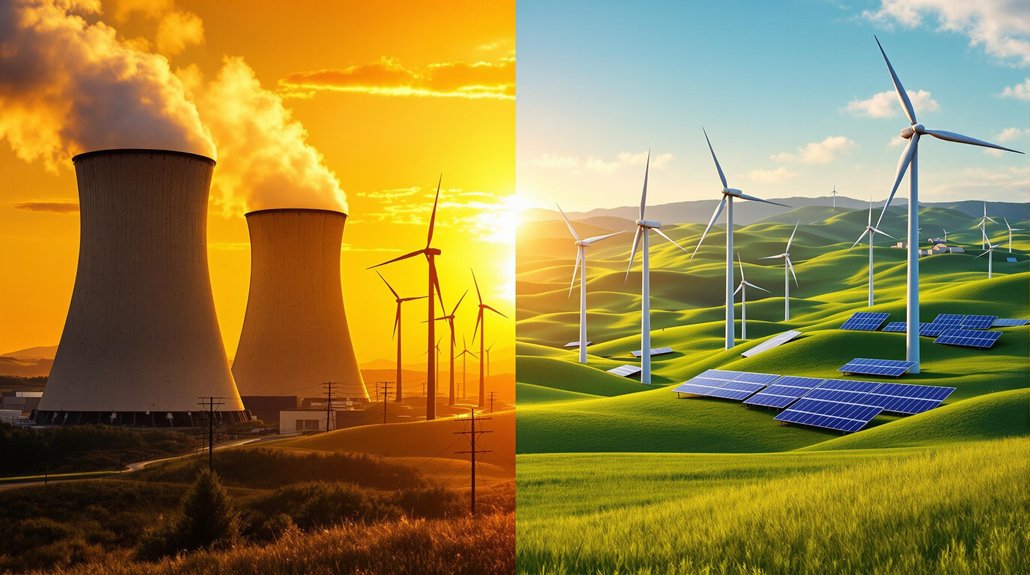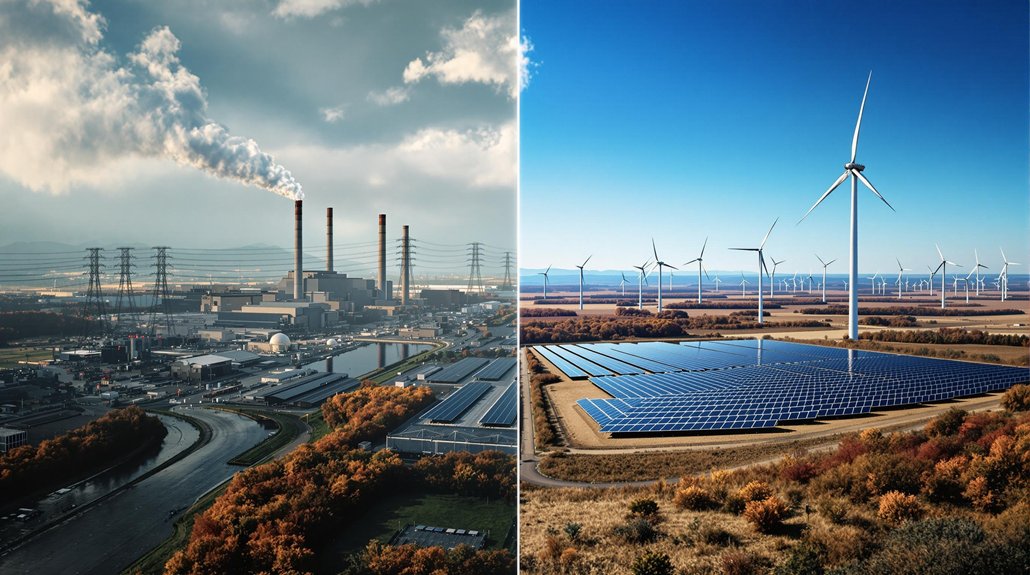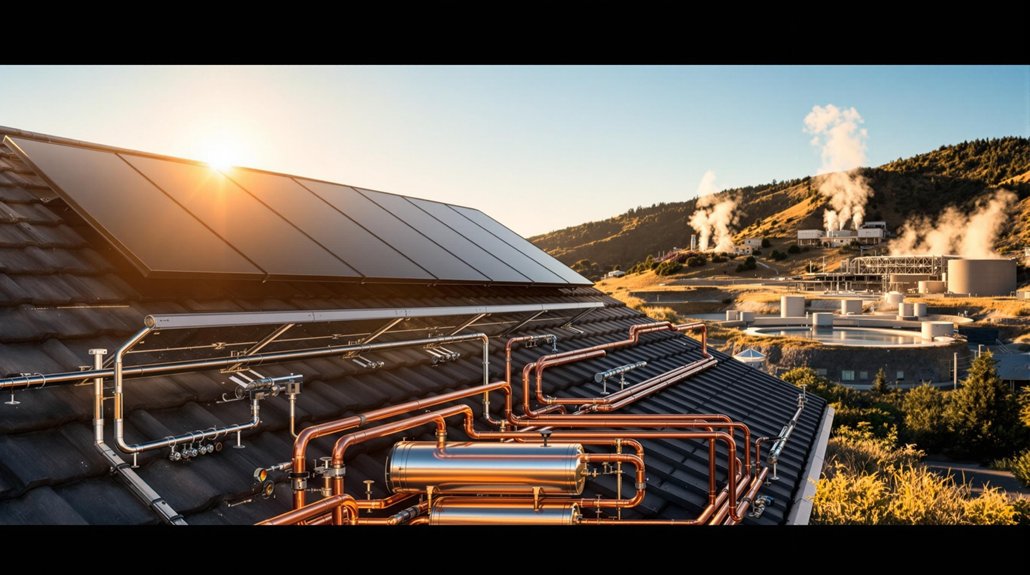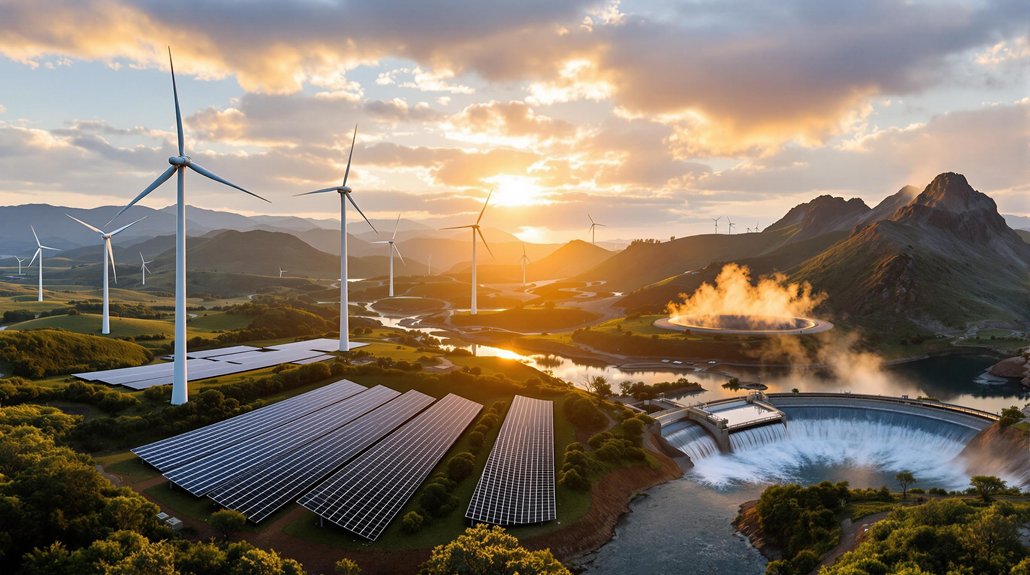Renewable energy continues to expand globally. Solar energy reached 1013 GW capacity in 2022, while wind power surpassed 837 GW in 2021. Hydroelectric power provides 16% of global electricity. Biomass energy exceeded 150 GW capacity in 2021. New technologies like artificial photosynthesis, fusion energy, and hydrogen fuel cells are being developed. These diverse options show that the future energy landscape won’t rely on just one solution but many complementary resources.
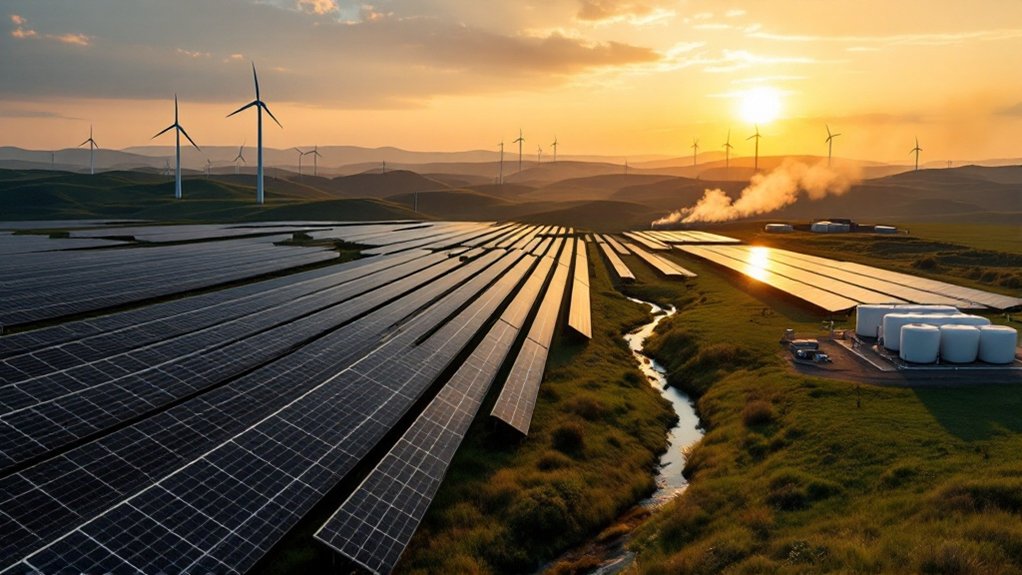
As the world faces increasing concerns about climate change, renewable energy solutions continue to gain momentum across the globe. Solar energy has seen remarkable growth, with global capacity reaching 1013 GW in 2022. Photovoltaic cells that convert sunlight into electricity have become much more affordable, with costs dropping 82% between 2010 and 2019. New developments like floating solar farms and perovskite cells are making this energy source even more practical.
The renewable revolution marches forward as solar capacity soars and costs plummet, bringing clean energy solutions within reach for millions.
Wind power has also expanded rapidly, with global capacity surpassing 837 GW in 2021. Modern offshore wind turbines can generate up to 15 MW each. The technology now includes innovative approaches like airborne systems that capture high-altitude winds and small-scale turbines suitable for cities. These renewable options help reduce greenhouse gas emissions associated with traditional energy production.
Hydroelectric power remains a major contributor, providing 16% of global electricity. Beyond traditional dams, the industry now includes run-of-river systems, pumped storage for grid stability, and tidal barrages in coastal areas. Micro-hydro systems bring electricity to remote locations.
Geothermal energy taps heat from Earth’s core, with global capacity reaching 16 GW in 2022. Enhanced geothermal systems are expanding potential sites, while binary cycle plants can operate at lower temperatures. Many communities now use this energy source directly for heating.
Biomass energy converts organic matter into useful power, with global capacity exceeding 150 GW in 2021. The field includes advanced biofuels, biogas from waste through anaerobic digestion, and improved methods like torrefaction. This approach supports environmental sustainability by utilizing organic waste materials that would otherwise contribute to landfills.
Ocean energy, including wave, tidal, and thermal conversion, reached 531 MW capacity in 2021. Technologies include oscillating water column devices and tidal stream turbines. These solutions provide clean alternatives to fossil fuels, helping reduce greenhouse gas emissions that damage our climate.
Scientists are also developing emerging technologies like artificial photosynthesis, fusion energy, and methods to harvest energy from waste heat and vibrations. Hydrogen fuel cells produce zero-emission electricity, offering another path forward.
These diverse renewable options show that the future of energy won’t rely on just one solution, but many working together.
Frequently Asked Questions
How Do Renewable Resources Impact Local Ecosystems?
Renewable energy projects affect local ecosystems in various ways.
Solar farms displace native habitats, while wind turbines can kill birds and bats.
Hydroelectric dams block fish migration and flood terrestrial areas.
Geothermal plants may contaminate groundwater.
Biomass crops often create monocultures, reducing biodiversity.
These installations can fragment habitats, disrupt animal behavior through noise, and alter water resources.
Changes to landscapes may also impact pollinator populations and introduce invasive species.
What Are the Economic Barriers to Renewable Energy Adoption?
Economic barriers to renewable energy adoption include high upfront costs and long payback periods.
Solar panels and wind farms cost more to install than gas plants. Limited financing options exist, with banks viewing these projects as risky investments.
Fossil fuels receive much larger subsidies globally than renewables, creating an uneven market.
Grid integration requires expensive upgrades to handle intermittent power sources from renewables.
Can Renewable Energy Completely Replace Fossil Fuels?
Experts believe renewable energy can completely replace fossil fuels by 2050.
Recent studies show this shift is technically possible but faces challenges. The intermittent nature of wind and solar requires better storage solutions.
To achieve full replacement, countries need massive investments in infrastructure, smart grids, and battery technology.
Despite fossil fuel industry resistance, over 50 countries have already set 100% renewable electricity targets.
How Do Different Countries Compare in Renewable Energy Implementation?
Countries vary widely in renewable energy use. Norway leads with 98.3% of energy from renewables, followed by Brazil at 89.3% and Denmark at 87.2%.
Smaller nations like Uruguay and Lithuania are exceeding growth targets.
Major economies show mixed progress: Germany generates 46% of power from renewables, while the U.S. sits at 23%. China produces 31% of its electricity from renewables.
Globally, 30% of electricity now comes from renewable sources.
What Skills Are Needed for Careers in Renewable Energy?
Careers in renewable energy require a mix of technical and soft skills. Workers need engineering knowledge in solar, wind, or other clean energy systems.
Data analysis abilities help track energy production. Project management skills are essential for overseeing installations.
Environmental awareness and policy knowledge are important too. The field values adaptability, as technologies change quickly.
Problem-solving and teamwork round out the needed skillset for this growing industry.
